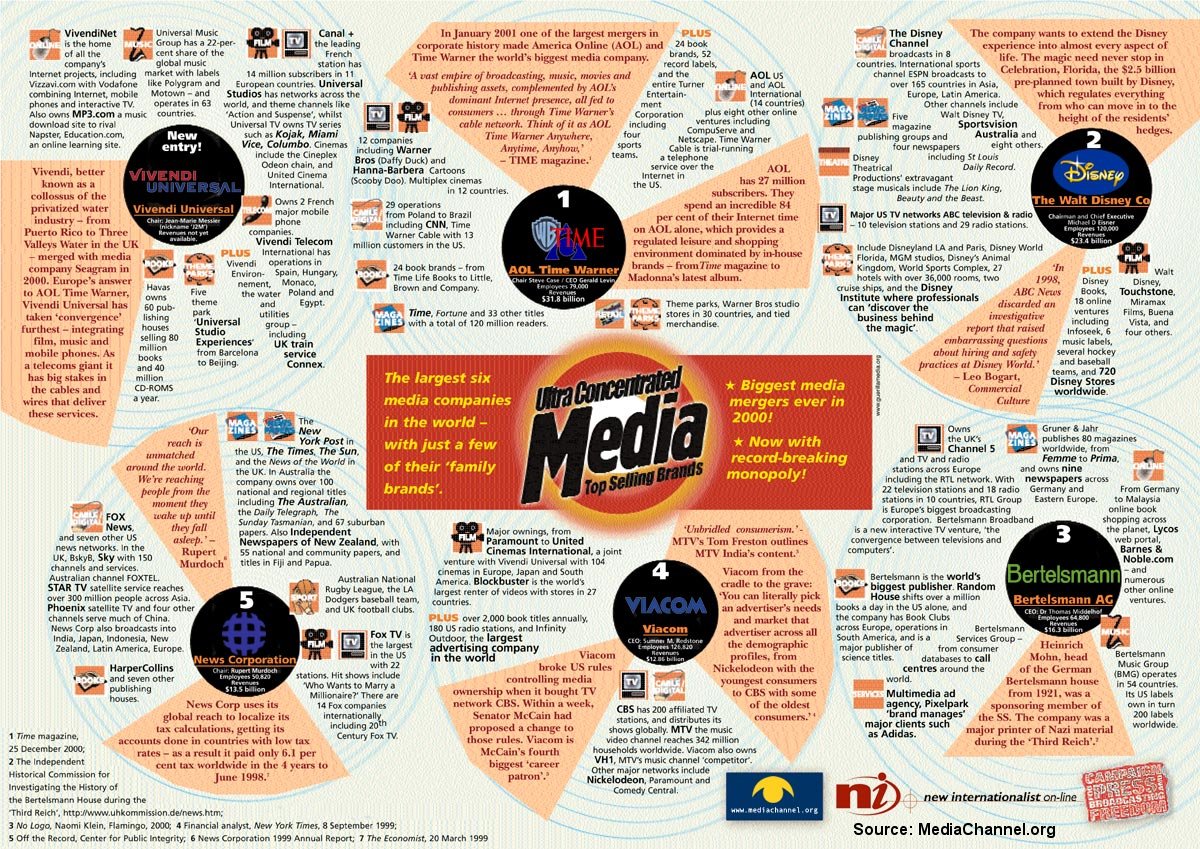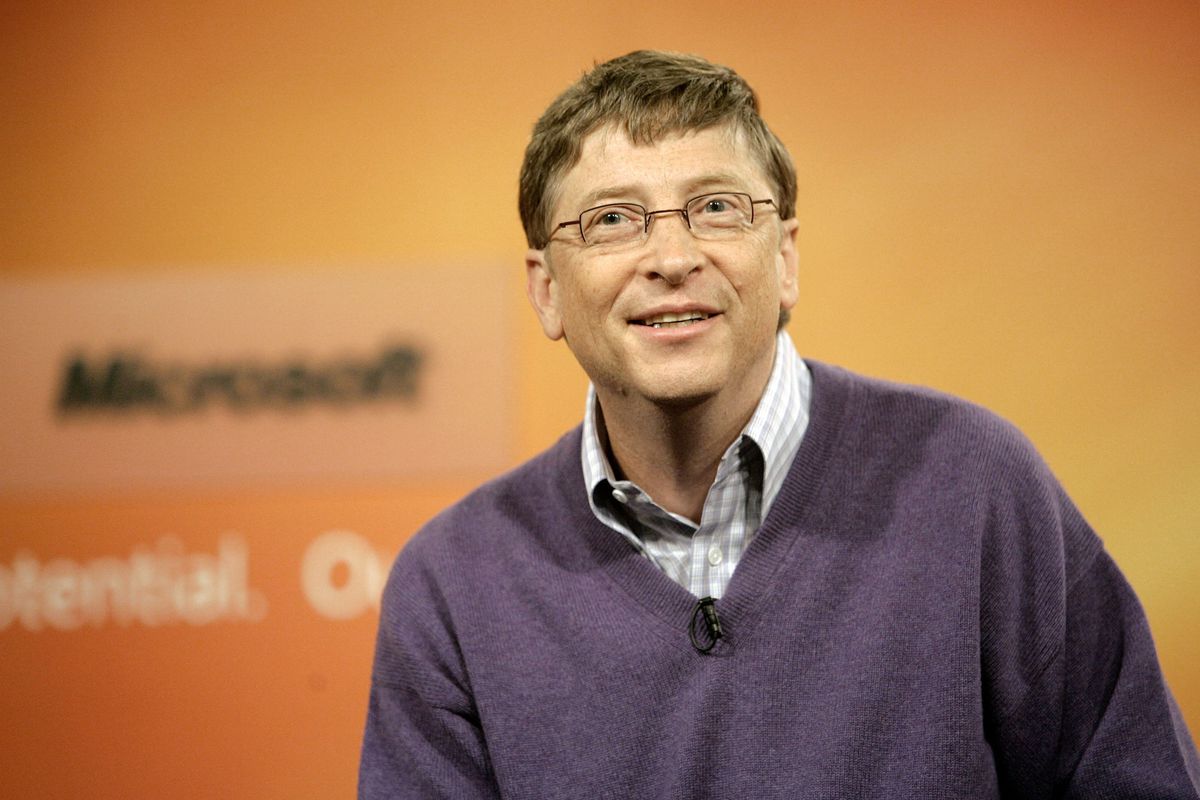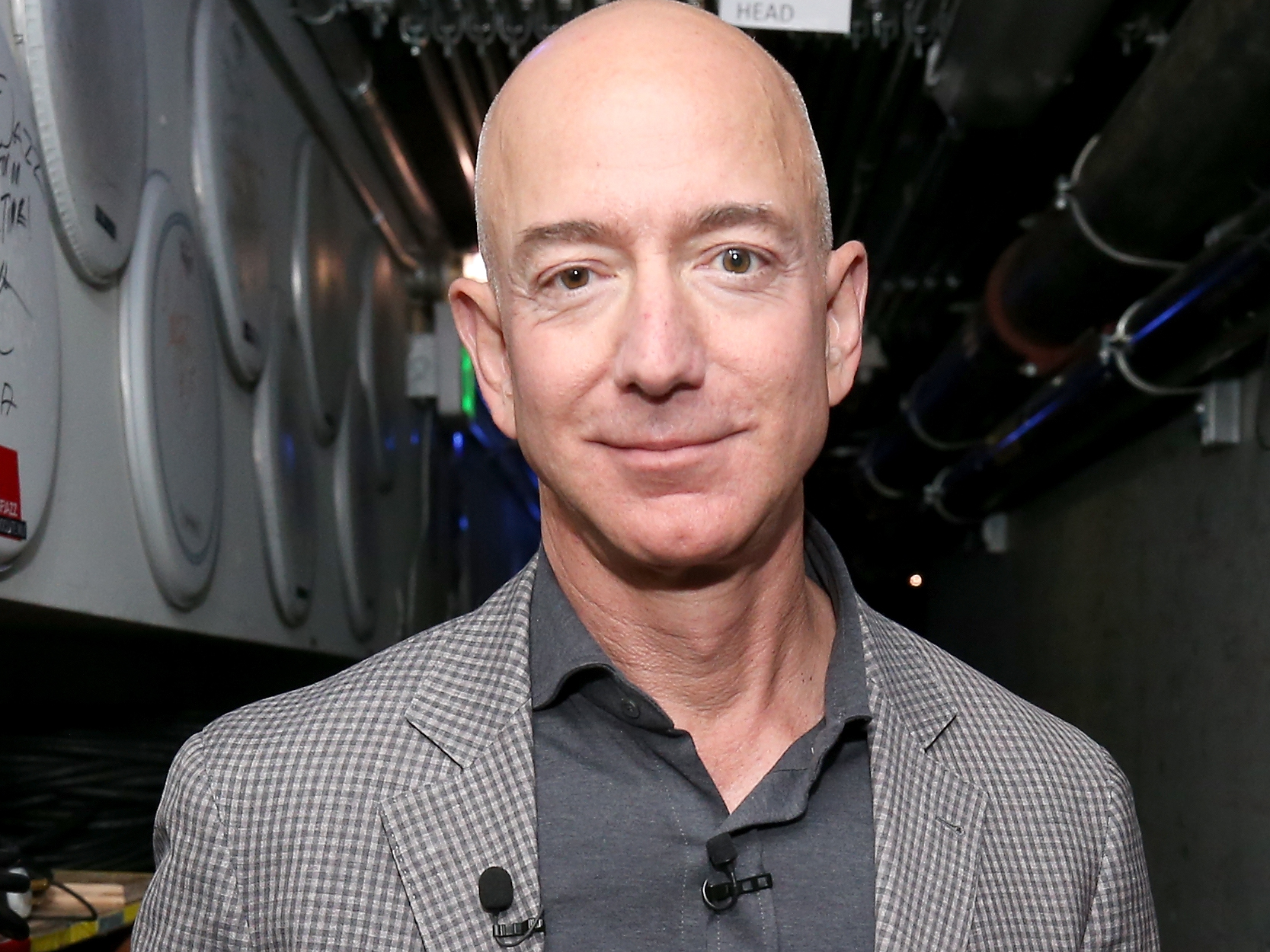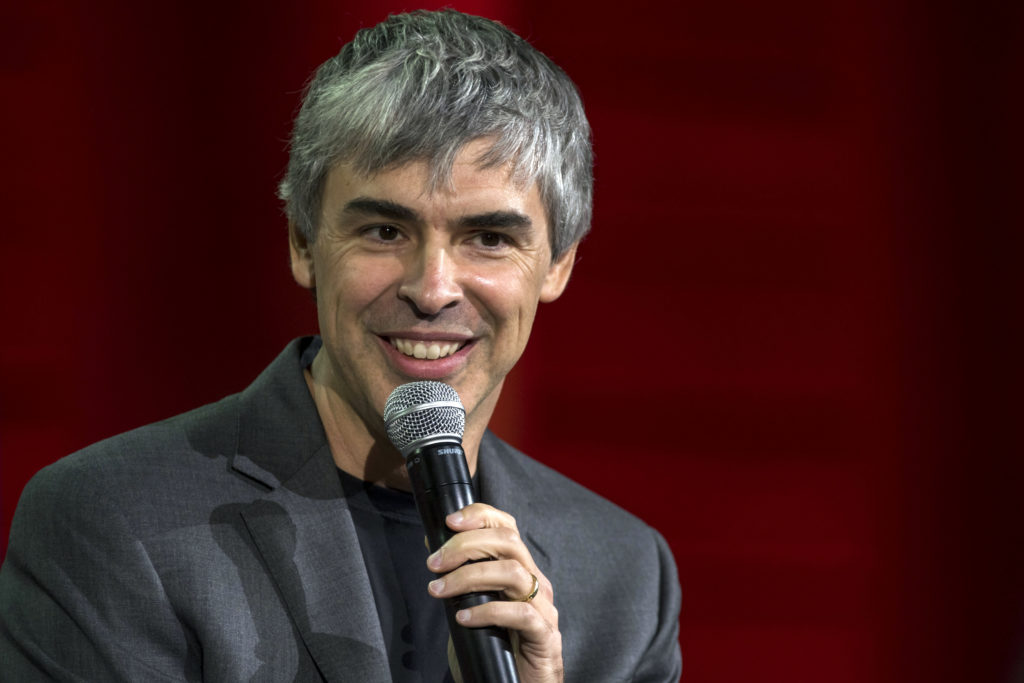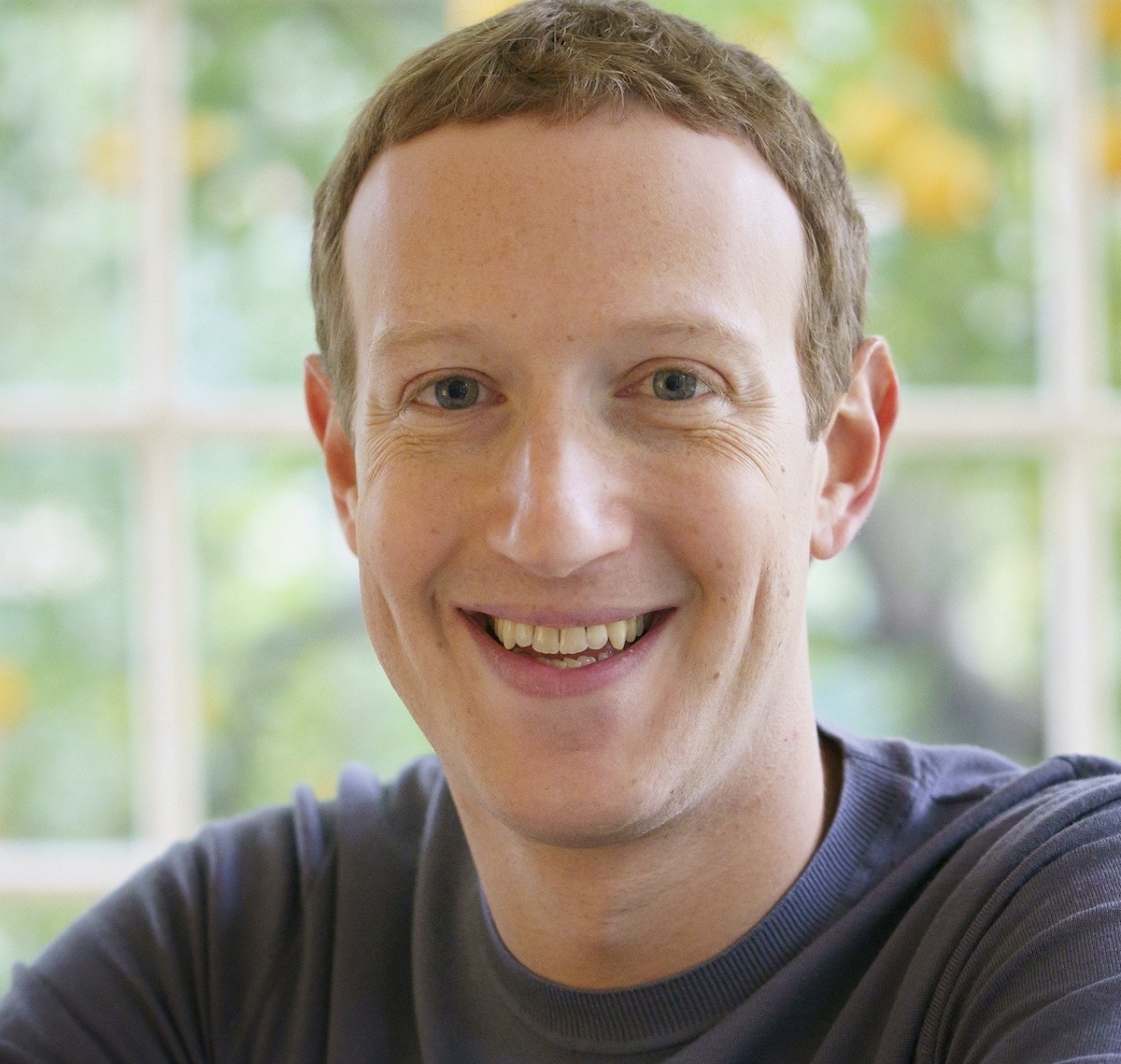COURSE SCHEDULE
Revisit this page often: Content is Subject to change with notice.
This is a media class so we will be covering media content/cuurent-events in real time.
|
||||||||||||||||||||||||||||||||||||||||||||||||
|
I hope you will use this course as a way to better understand how media operate and how to work with them for a better world and more positive future. As former FCC Commissioner Nicholas Johnson put it, “It isn’t what media are doing to us, it is what they could be doing for us—but aren’t.” As you move through the material, understand that I'm approching the class by specifically moving to the forefront, the perspectives of the typically media misrepresented, stereotyped, marginalized, neglected or culturally disinfranchised. Mostly, that means those who are not in the majority, not in control of the government and not in control of media. It is important to know that whoever controls the message, controls the conversation. This course is about having a different conversation than the ones we are urged to have or socially rewarded to have (for punished for not having). I'll do my best to provide alternative arguments along the way. But, I reckon, you've heard and hear the priviledged/majority's side of the story all the time—visibly and but also mostly invisibly (every time you are presented a situation as being"normal", or someone says, "that's just the way things are or should be" or "that's just the way it is" or "that's just how things go" or "you know what they say (whoever "they" are), etc. It is undeniable that people are not having the same "living-in-the-USA" experience. Clearly, there are some strong divides and differing opinions. Also clearly, our national culture and democracy has been written, developed and dominated by some and others have been left out. Media are some of the strongest influences on the public mind and are accomplices to if not perpetrators of the marginalizing of cultures and communities. Media tends to act as a bullhorn for dominate voices (always remember Media are also corporations with profit agendas). As a priviledged white woman, I do not believe it is my place to interpret, incapsulate or "speak for" those outside of my lane (activism or movements such as #BlackLivesMatter, #StopAsianHate, #Indiginous, #LGBTQ+, #NotYourRescueProject, to name just a few). But I do believe it is my place—my responsibility and obligation— to educate myself, to respect and perpetuate perspectives and to become a productive ally for diversity, inclusion and equity (DEI). It is also my job to advocate for media literacy because media can expand and expound ideas into culture. It is my hope that everyone will educate themselves and each other (or uneducate from preconceived notions, stereotypes, prejudices, hatred, etc.) by focussing on productive media content that exists but may not be "economically viable or marketable" in our present system (myths, by the way). There are a myriad of messages, speeches, films, podcasts, radio/tv shows, books, poetry, articles, music, online courses, etc. produced BY and FOR marginaized communities who need/deserve (pick any verb you'd like) respect, empathy, support, activism, and allies. The call is to Get Educated. Watch. Listen. Learn. THEN ACT. As "they" say: Democracy is a verb, not a noun. Truth is a verb, not a noun. Media literacy is also a verb, not a noun. We literally have to act in order for positive things to happen and exist. It only takes a few seconds to find suggestions. Despite my years of teaching media and culture, I never stop learning. I'm watching, listening, reading, participating all the time: A never-ending process. I work to be open as I seek to know more and more. One thing always leads to the next. For example, I took Ericka Hart's Racial and Social Justice course, that I found out about because I posted an Angela Davis clip and a Lemon Clip (Don Lemon: Imagine How Your Inaction Impacts Your Friends of Color), someone saw it, invited me to an online talk featuring Prof. Davis that same week (that I didn't know about). From there, someone recommended the Hart course. One thing leads to another. But you have to take the first step in a productive direction (or change directions). So, let's begin with demographics to get the ball rolling (2020 census date is the most recent taken): 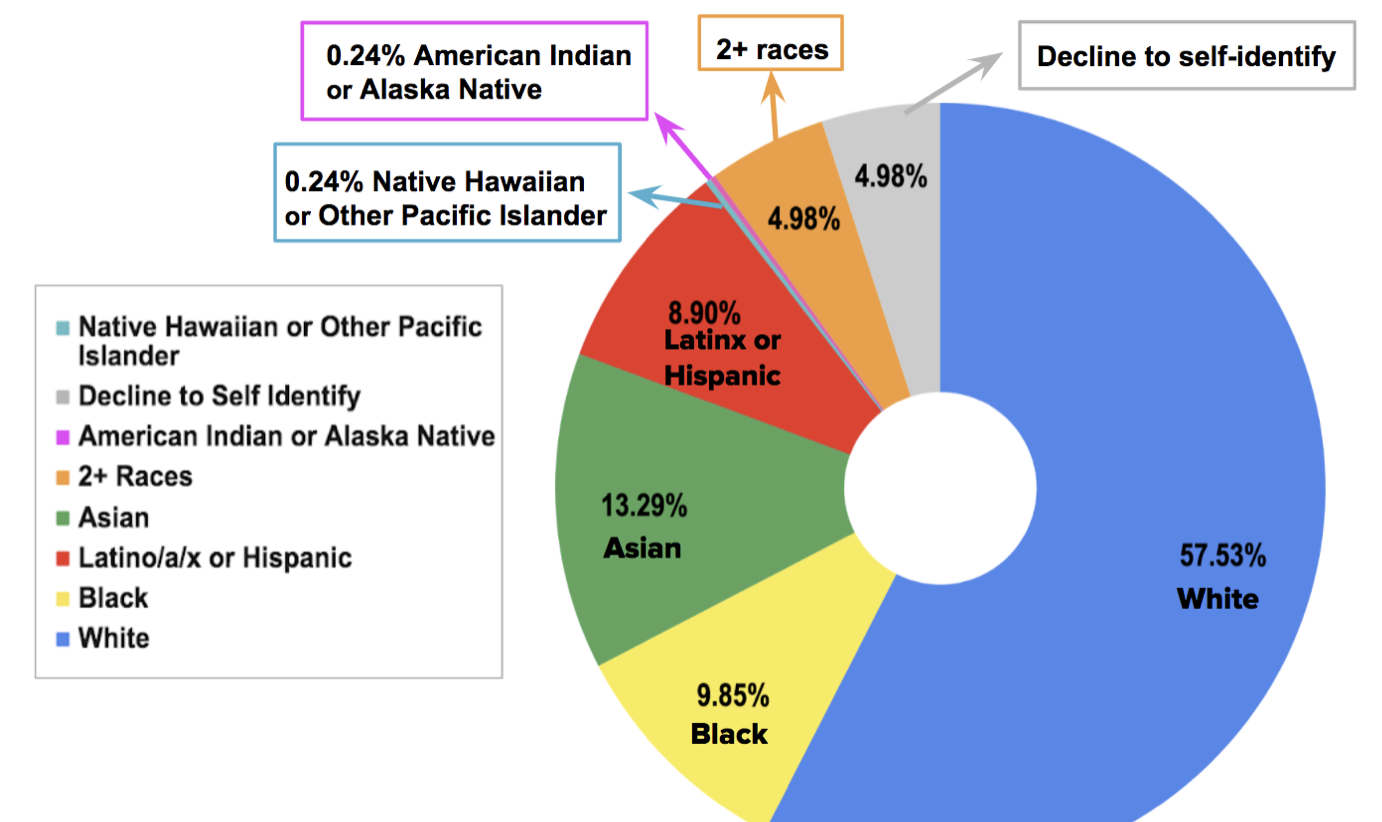 White people are still the majority and dominate culture by race, males still hold more money and power even though they are the "hetero-gender" minority (outnumbered by women by 2%-3%), and heterosexuality is the dominate/majority/mainstreamed orientation. But these statistics are changing. The U.S. is becoming more diverse in all categories. Nevertheless, whoever controls the communication, still controls the conversation. Communicataion, in its simplest form, can be defined as shared meaning. One of the first, basic communication models, dissects communication into three major parts: a SOURCE sends a MESSAGE to a RECEIVER. Using these components, we can define several different kinds of communication. The Linear Model: There are two communication models that describe most communication. The linear model is one-way, non-interactive communication. Examples could include a speech, a television broadcast, or sending a memo.

MASS COMMUNICATION: A CRITICAL APPROACH The transactional model is two-way and interactive. In the transactional model, both parties are both sender and receiver. It happens in real-time and, generally, they must both be present, even if it’s via technology. 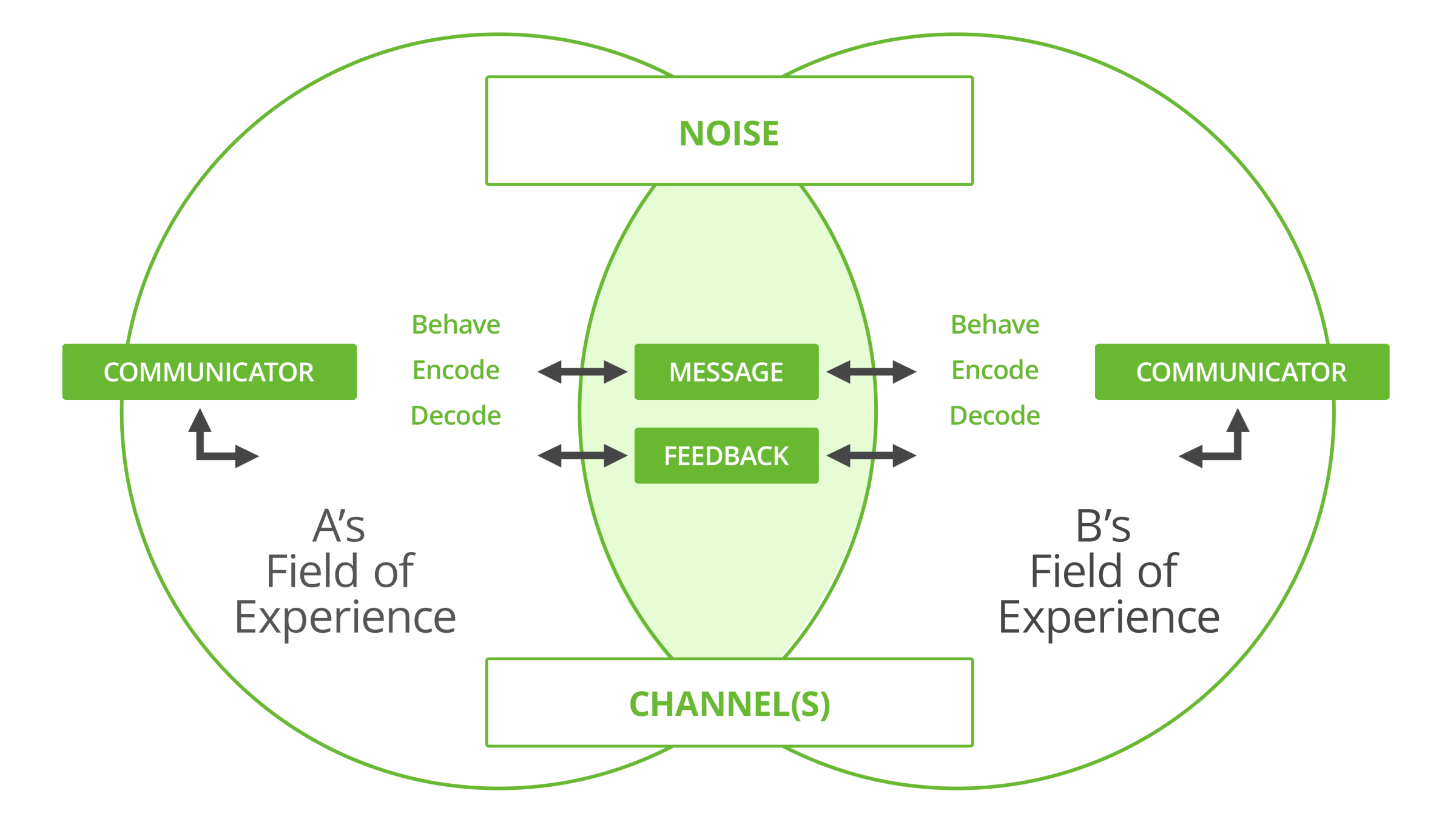 Is one model or communication style better than the other? No, not at all. It’s a matter of choosing the best model under the circumstances and for the type of message. (Is it still bad form to break up with someone by text?) You also have to remember that communication can move back and forth between the models. For example, a training session might start with a lecture (the linear model), followed by a question and answer session (the transactional model). It might then go back to a lecture (linear), and finish with a group discussion (transactional). Examples of the transactional model include a face-to-face meeting, a telephone call, a video call, a chat/text session, or interactive training. As with the linear model, noise can affect communication. Noise can be present in all of the previous communication examples. It can show up as technical problem (dropped call, static, downed wifi) or it can even be physical/mental/emotional such as a person feeling hungry or having gotten into an argument with a family member or having a positive/negative lived experience that influences their communication encounters (that's why we have content warnings CWs and trigger warnings TWs). (https://doncrawley.com/how-to-communicate/) Probably the most difficult part of teaching people about media is that they believe they already know everything they need to know about it because we consume it all the time. Most of us engage in some kind of media interaction everyday because media technology is all around us, 24 hours a day, 365 days a year. To name just a few media sources: radio, television, film, newspapers, magazines, smartphones, computers, the Internet, digital games, gps, satellites, tablets, and other smart devices, etc. Media consumption has been described as pandemic. And now, in the age of COVID-19, pandemic has a whole new level of experience and understanding: Study after study claim that Americans consume a lot of media. According to STATISTA.com, (Daily media consumption in the U.S. 2020, by format, published by Amy Watson, Jun 17, 2020) "In terms of average time spent each day, TV is the second most used form of media in the United States, with adults spending 229 minutes (almost four hours) watching television on a daily basis according to a study undertaken in April 2020. Digital formats took up the majority of U.S. adults' daily media consumption time, while for newspapers and magazines the average time spent was just nine and eight minutes respectively. If it is true (and it is) that we spend more time consuming media than doing ANYTHING ELSE in our lives (eating, sleeping, working, getting exercise, making love, spending time with our families, getting educated, exercising, etc.), then why is it we are not better educated about our media interactions/consumption? Why aren't we taught about our relationships with media in school? We begin consuming media as babies, so by the time we start kindergarten or first grade, we've already been listening and watching most of our lives. So why aren't we taught in first grade how media work and how we can protect ourselves as much as possible from their negative influence? Why aren't we taught to discriminate between quality media or accurate information from destructive messages and lies? Or why aren't we taught how to use our influence as audience members to challenge the media to better serve us or provide us with higher quality product or more balanced and fair coverage? Or how about uniting us instead of dividing us (using exactly the same algorithm knowledge)? How could this much interaction with media NOT have consequences and effects? Of course, it does. And the stakes are very high. Media provide us with news and information (but what kind and accurate according to whom?) Media influence who we elect as our political leaders. Media spotlight some voices and perspectives while ignoring others. Media perpetuate and destroy stereoptypes, power structures and cultural systems. Media represent us (citizens of the USA) to the rest of the world. Media provide us with ways to define ourselves. All of this is to say: the better media literate we are, the more power we have in working WITH media to make the world a better place. Sounds simple and lame, but it is true. So let's get started. WHAT IS MEDIA LITERACY? (Lots of different definitions, here are a few you need to know): "Media Literacy: to develop an informed and critical understanding of the nature of mass media, the techniques used by them, and the impact of these techniques." - Dr. John Caputo "Media literacy is a set of perspectives that we actively use to expose ourselves to the mass media to interpret the meaning of the messages we encounter." - W. James Potter "The purpose of media literacy education is to help individuals of all ages develop the habits of inquiry and skills of expression that they need to be critical thinkers, effective communicators and active citizens in today’s world." - National Association for Media Literacy Education (NAMLE) So in order to be media literate MEDIA EDUCATION FOUNDATION (MEF), the non-profit media literacy organization's, illustrates how the process of effective media analysis is based on the following concepts: 1. All media messages are “constructed”
no matter how simple they seem. Most of us hardly give our media interactions a second thought. We are so immersed in our mediated world that the metaphorical question that is often used to describe our contemporary relationship with media is "does a fish know it is wet?" Media are mostly invisible to us—until they don't work or we lose access to them (when your computer crashes, when you lose your smart phone, when a natural disaster knocks out electricity and connectivity) or if you are simply out of range (hard to believe there are still areas on the planet that aren't covered.) When our connection to media is severed, you often hear people describe their experience as feeling "lost", or when referring to their broken computers/phones "My life is in there." This is why media literacy—the understanding of how media function and affect society is important. Here are a list of 10 reasons why media literacy is important (according to the Media Education Foundation MEF). 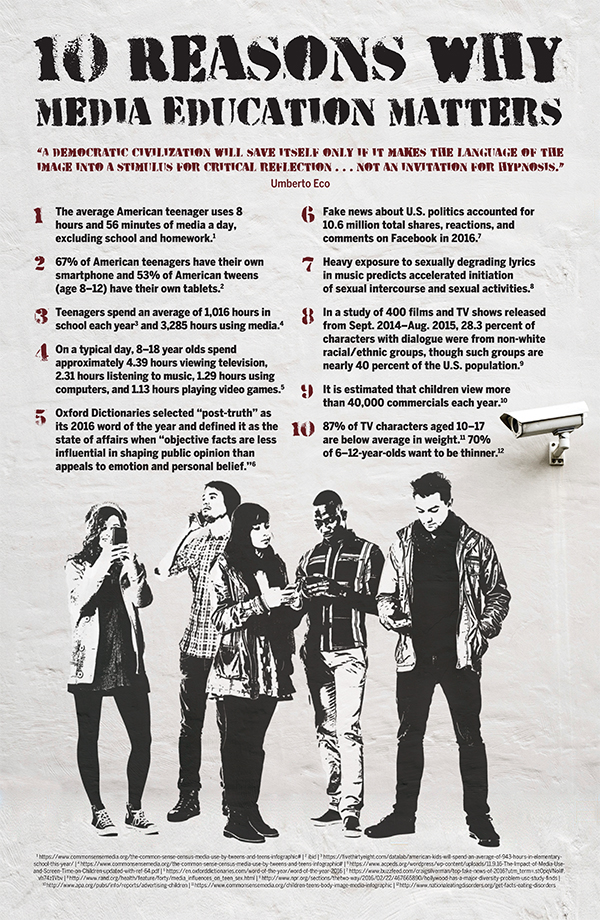 So how do we begin analyzing how we interact with media, how media function and how we can become more media literate? The easiest way to understand how a process works, is to deconstruct it into it functioning parts. Referring to our communication model, we will begin by looking at the source:
There is often confusion (much of the time this confusion is instigated by media corporations themselves) that the Constitution protects media so they can say/do whatever they want. Not true. The Constitution DOES protect the Press in the First Amendment which reads, "Congress shall make no law respecting an establishment of religion, or prohibiting the free exercise thereof; or abridging the freedom of speech, or of the press; or the right of the people peaceably to assemble, and to petition the government for a redress of grievances." The reason our country's founders wanted to protect the Press was because of the ideal of the Press acting as a Fourth Estate of the government. The U.S. has three branches of the government (executive—the President, legislative—the Congress, and judicial—The Supreme Court) that act together as checks and balances (the idea that no one entity can control everything (no more King). If you missed that history lesson, no worries. Watch SCHOOLHOUSE ROCK'S "NO MORE KING." If you are curious about SCHOOLHOUSE ROCK, here is their WikiPage. The PRESS were/are suppose to act as a 4th Branch of the government: providing the population with information so they can participate in our democracy from a place of knowledge and understanding. If the government isn't representing the people or if corruption is present, the Constitution allows for the press to report it to the people. The Press are suppose to be THE WATCHDOG of the government. Media are suppose to be on our side instead of on the side of their own profits, or other powerful corporations or politicians or systems of power and money. Here is SCHOOLHOUSE ROCK'S, "I'm Just a Bill" And here is The Roots- I Am A Slave Black-ish: About Juneteenth (using the same format and melody)
MEDIA OWNERSHIP One of the most important issues regarding media (requiring regulation of media) revolves around media ownership. Our country has a deep history of not liking monopolies (until this century, it seems), so we have passed rules (that have been relaxed over the years) regarding how many media outlets companies may own. When media ownership is merged into the hands of a smaller and smaller number of companies, it is called CONCENTRATION OF OWNERSHIP. And, when companies that own media aren't media companies per se, it is called MEDIA CONGLOMERATION. When a single media corporation (or just a few) gain all of the control. It becomes a big problem: For democracy, for the public, for the world. Even the media, themselves, have presented content that is reflective of the dangers of concentration of ownership and media conglomeration. Watch a clip from the Film NETWORK—Howard Beale's Speeches: TURN OFF
Watch the opening of the reboot television series based upon a version of NETWORK: Review the images below to get a sense of how few companies now own media compared to the numbers of the past AND how many media owners are giant conglomerates that own A LOT of other things. Review several media company holdings at FREEPRESS.NET. There are a lot of these ownership charts (GOOGLE: media ownership). Here's another one of my favorites. And, no, it isn't lost on me that all of the owners are white men (exception: Sony, a Japanese company, has a President who is Japanese and a man).  
Notably, with the exception of Mr. Hirai, nearly all media are owned/run by very powerful, rich, white men. A lot of students sigh and feel helpless against such a powerful, wealth focussed-and-protected, entrenched system (media in the USA). In fact, part of the cultural story we tell ourselves is that the media are too big and powerful to change or for us to influence. That story is wrong. It is a myth that only serves those who gain or maintain power from that story. Remember: Media "they" cannot engage you, define you and reflect you if you do not cooperate. We just need to see the media NOT as a separate "mediating" entity that is simply the go-between us and governments/corporations/insitutions that are simply delivering content to us. Rather, the media themselves ARE the corporations and insitutions who are selling products to us (like laundy soap, make-up, lifestyles, and politicians) and culture to us (what it is to be happy, successful, a real man, an attractive woman, a good parent, Black, Asian, Native American, Pacific Islander, European, etc.) Check out PBS's MEDIA GIANTS ownership listing. And here are other versions of media ownership illustrated: 
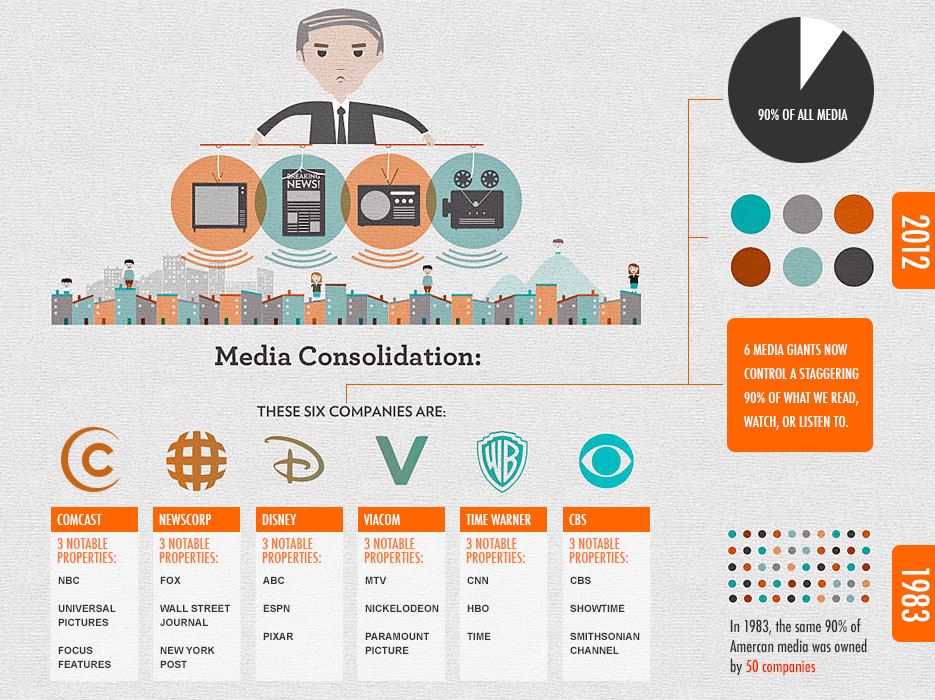
It is undeniable that media ownership is racially skewed toward whites and, more specifically, white males. It should come as no surprise that media—so embedded in our culture—is not immune to our country's history of systemic racial inequality or lack of diversity/equity/equality. Take a look at photos from all of the presidents we've had since the beginning (Bidens' photo hasn't been added yet, so I'll put it at the bottom). Despite the demographic breakout of the country, (remember the chart at the beginning of the course?), white males have dominated the development, government, economics, debate and media since the beginning.

But things are changing. The key to the solution lies in education and action—not on the part of others, but on our own part. The public owns the airwaves so we need to demand diversity/inclusion/equity when it comes to media ownership, media content and media influence. And the first step to that, is with our own consumption. We literally vote (and put money in the pockets of media) with our eyes and ears. When we consume, we create reality by directly affecting what messages will be accpetable (marketable) and perpetuated (giving us more of "what we want.") So let's take a look a different kinds of content and media distribution systems. ButWhen thinking about online, the internet and social media, we will be moving to discuss the source, message and receiver all at once. Because often times, the audience member can also be a source. And everyday person can have their content right up there with the richest of media companies like Disney.
This access (digital divide not withstanding) has been made possible because of technology: Our culture has always held a fascination with technology. And predictions of what technology will provide are often utopian. WATCH THE FUTURE IS NOW (1955 prediction of the future)
Industry wants us to like technology and see it in a positive light or as an opportunity. But the reality of technology isn't so utopian. What happens when it doesn't work can be catastrophic. Ask anyone who has lost or broken their phone, lost wifi connection, or destroyed a computer hard drive without backing it up. Or, on a larger scale, technological failures can lead to shut downs of systems (public services like electricity, etc.) And what happens if only some of the population have access (digital divide?) What happens when big data are used as another way to marginalize and discriminate against groups that are already subordinated and vulnerable? For an example: Here is a section of Instagrams Terms of Service (Facebook, now META) "Post photos and videos that are appropriate for a diverse audience. We know that there are times when people might want to share nude images that are artistic or creative in nature, but for a variety of reasons, we don’t allow nudity (Links to an external site.) on Instagram (Facebook, now called META). This includes photos, videos, and some digitally-created content that show sexual intercourse, genitals, and close-ups of fully-nude buttocks. It also includes some photos of female nipples, but photos of post-mastectomy scarring and women actively breastfeeding are allowed. Nudity in photos of paintings and sculptures is OK, too." There are several points to think about here. Why are women's nipples a problem but men's are not? Are people attracted to women somehow less capable of controlling themselves than people attracted to men? One workaround to remain compliant with policy is to blur or cover female nipples (with tape, pasties, your fingers, whatever you find handy) the rest can be as provactive as you'd like? So it is acceptable to be completely naked except you must cover those two several-inch sized pieces of the body? And how would an AI or a human screener be able to determine whether the nipple owner is male, female or neutral unless that owner specified. The standard bizarre and, in the end, isn't equally or fairly applied anyway. On May 29, 2022, The Supreme Court Blocked a Texas Law regulating Social Media Platforms. The law, prompted by conservative complaints about censorship, prohibits big technology companies like Facebook and Twitter from removing posts based on the views they express. A lot of this had to do with the banning of former President Trump from social media. Meanwhile, lots of other types of content is also being blocked. One of my colleagues studies sex-workers and how they are misdefined and marginalized, but also how other cultural communities associated with sex work are also marginalized by the same negative treatment (guilty by association). Please read this article about the censorship of Instagram User Ari Fritz. https://www.bitchmedia.org/article/ari-fitz-interview-leaving-instagram  But Kim Kardashian was able to post all these and thousands more like them. 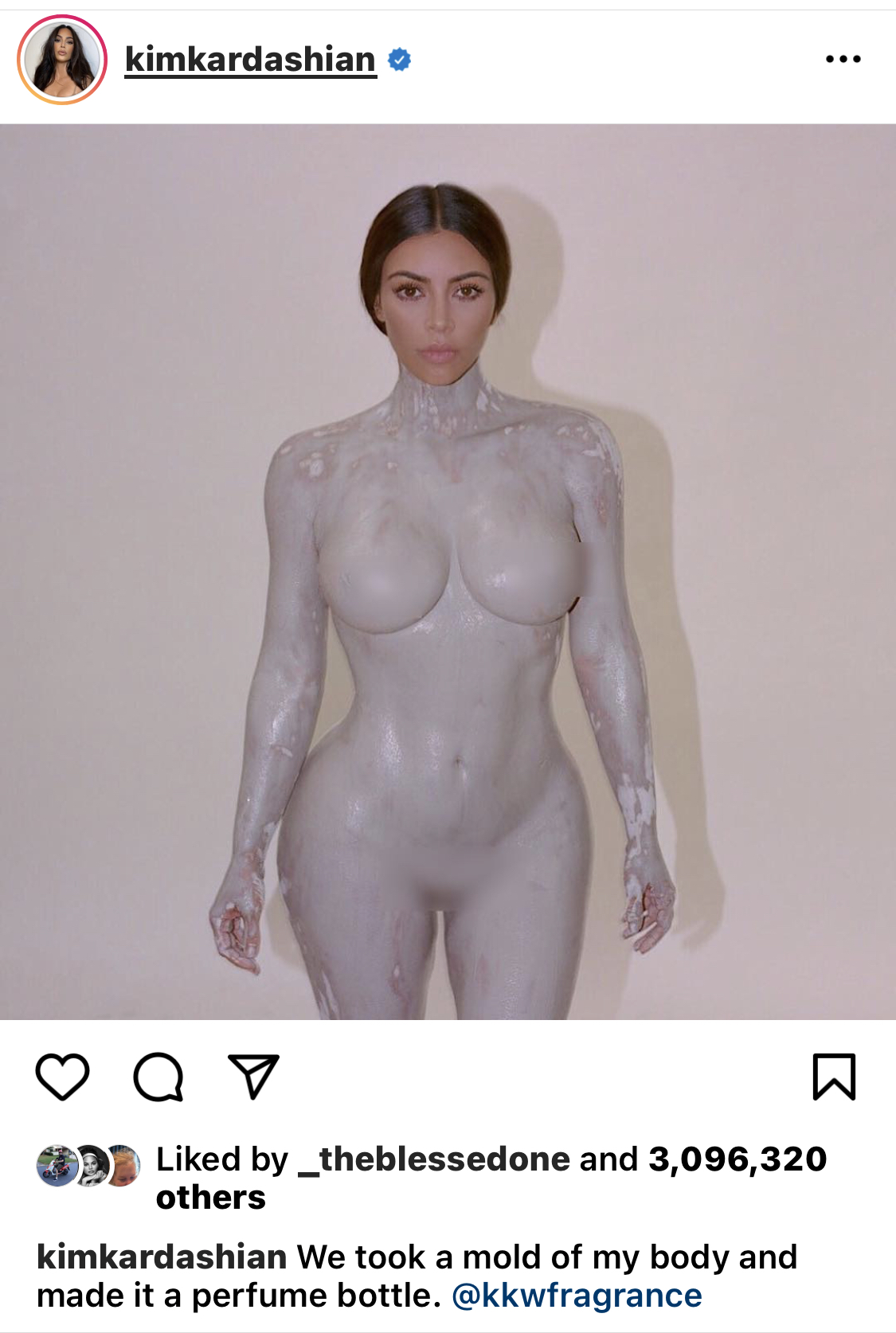  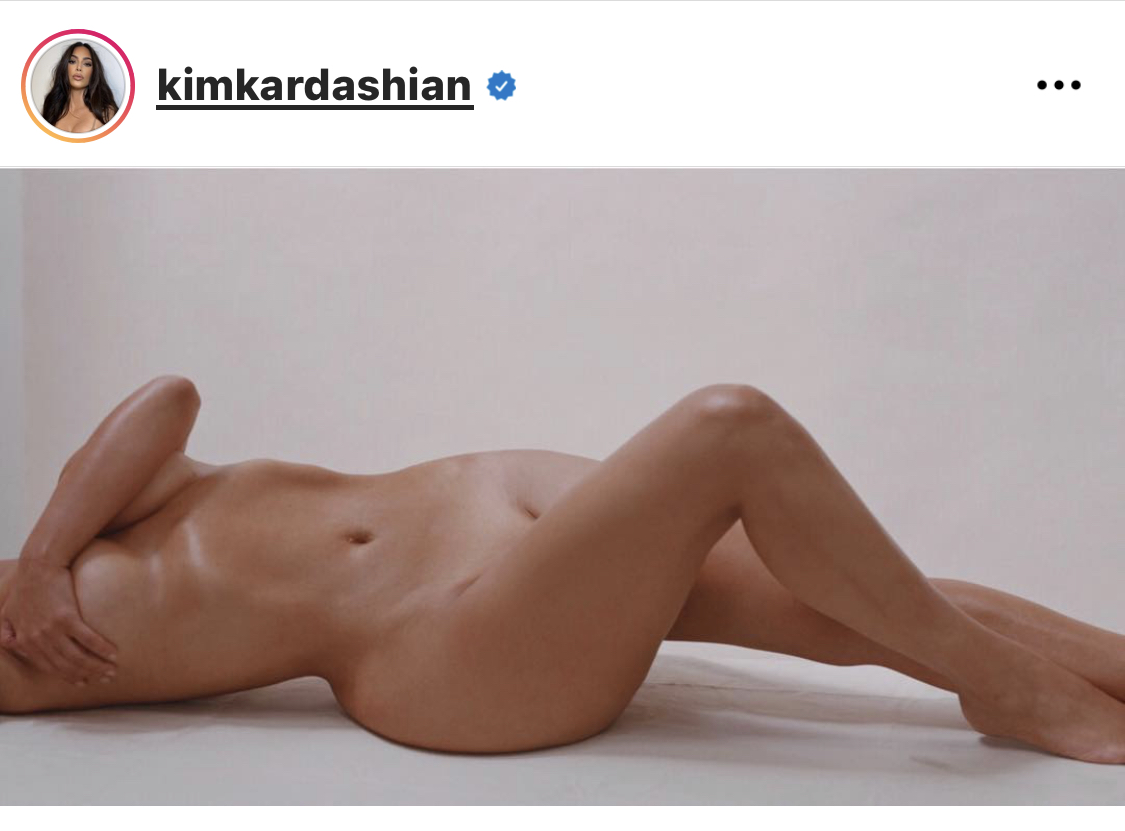    So Kardashian's nakedness is okay (replete with nipples) when it is a scaled replica in her shape (as a perfume bottle WITH nipples), as long as you can hold it in your hand, but not see it in a photo, and while others are banned for doing the same? ---------------------------------------------------------------------------------------- IS ALL TECHNOLOGY IS GOOD? 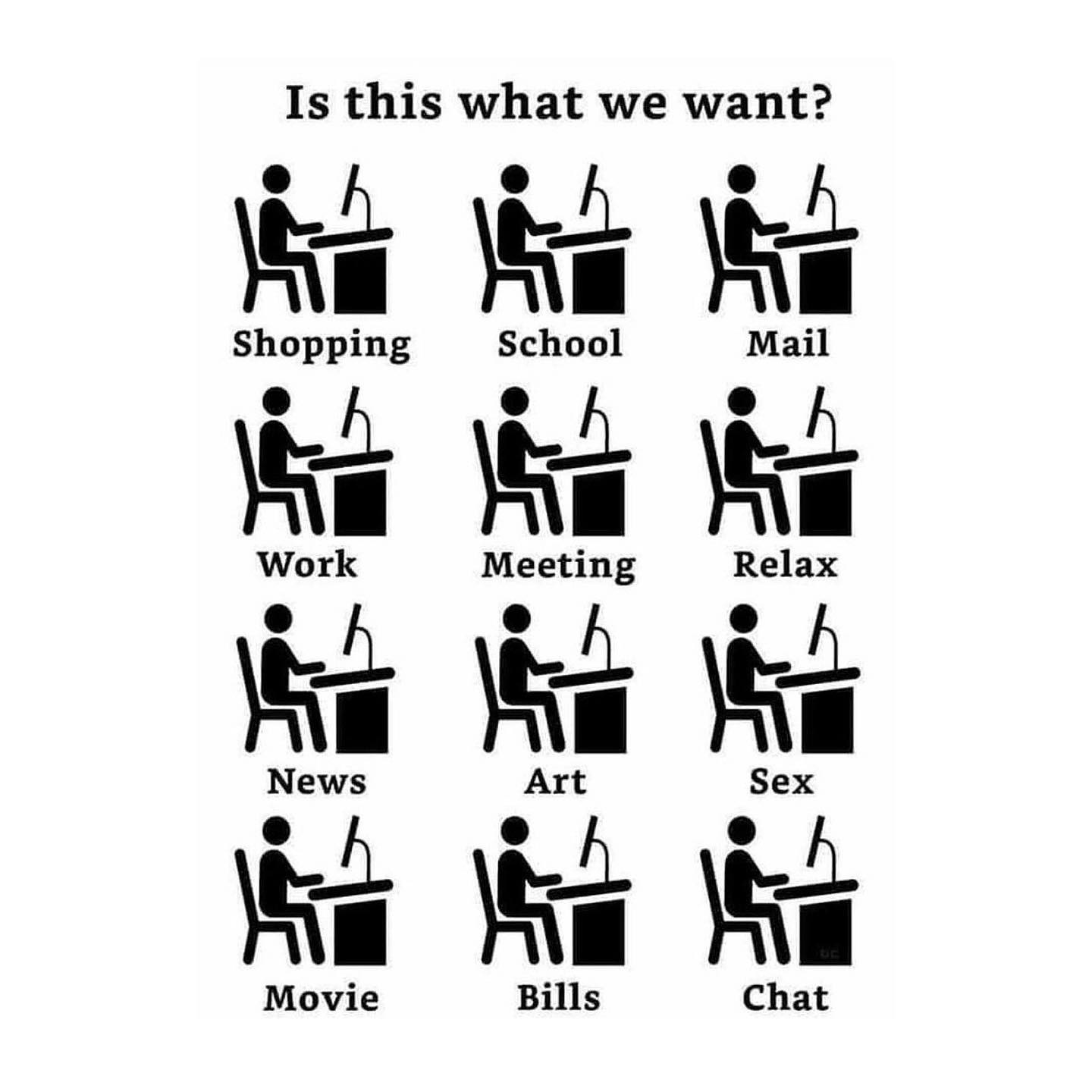 There is a common theme that online is magical and technology is good AND can solve most problems AND make the world a better place AND make everyone's life easier. When first launched, the Internet was hailed to be the great democratizer. WATCH AT&T's VISION OF THE FUTURE. This PR piece was made to attempt to make people feel comfortable transitioning into digital life (going online). It was made in 1993—the year the Internet was "born" Notice what they got right in their predictions (smart devices, gaming, video calling) but also what they got wrong (AT&T, the PHONE company didn't know we would have cell phones in the future?) In this piece, notice what orientation/gender/race/class: the business leaders are, the community-centered care-givers are, the children are, etc. Check, then recheck the diversity (race/gender/orientation/class) make-up of this industry public service announcement (PSA) / commercial.
WATCH Adam Ruins Everything (Adam Ruins Facebook): So we all know that the Internet never forgets (once it is out there, you can't fully erase it or retract it). And that everything we do online is being tracked and recorded, etc. Social media platforms are now being scrutinized for "allowing" false information to perpetuate ideas that lead to actions. The Russians (and by Russians we mean the authoritative government in power, not necessarily the public), for example, have been blamed for creating separatism and influencing American campaigns via Facebook. A study of 200 million posts determined that over half of posts advocating re-opening from the Corona virus were posted by bots. (Literally: Robots were dominating the conversations.) What happens, then, when information is used against us? In addition to social media, consider BIG DATA. It is (and will be) presented to us as an allowable infringement of our privacy (to stop crime or whatever), but how can it be used against us and normalized by authorities? Is China's 5G network a threat to world security or is it going to to launch us to the "next level" of technological innovation (or both?) And what about these algorithms we keep hearing about? Contemporary television shows like THE GOOD FIGHT (a spin-off of THE GOOD WIFE lawyer series) are now inserting animations to explain how, in this case, algorithms work against us to affect public opinion. WATCH: THE GOOD FIGHT ANIMATION: RUSSIAN TROLL CHANGE Consider artificial intelligence. Will it help us and make life better? Or will it take our jobs and make life worse? Continuation of digital development is only an inevitability if we decide it will be.  And what happens if we isolate ourselves (we've done this in ways never before experienced in human history during the Corona Virus pandemic) and become less willing and/or able to interpersonal interact with one another? The following two messages were created BEFORE the pandemic. WATCH: THE INNOVATION OF LONELINESS WATCH: THIS AD (try to guess what it is about before the end, notice the irony of the message to the product) Culture can be influenced by all kinds of online content (beyond social media). Even gaming presents perspectives. On the up side, social media can and is being used more than ever to bring people together to share interestes, concerns and to organize political activism. READ: The Pew Research Center's Social media continue to be important political outlets for Black Americans ADVERTISING AND COMMERCIAL CULTURE (RACISM IN THE SYSTEM) Referring to our communication model, we will continue to look at media as the source, and we will talk about various kinds of messages, but we will now turn our attention to people and culture:
We. Are. The. Receivers. What makes our U.S. media system unique is that IT BELONGS TO THE PEOPLE. The airwaves belong to the citizens of the United States of America—NOT the government, NOT private companies, but THE PEOPLE. We decided this a long time ago after WW1 when our radios were taken from us by the government during war time. Other countries' media systems emerged as authoritative (China) or paternalistic (ENGLAND), but the United States (because of the power of the people in our democracy) demanded that the media system be public. It all revolved around the notion that THE ELECTROMAGNETIC SPECTRUM was "SCARCE" or limited and, therefore so valuable that it must be owned by everyone. Communications use a very small portion of the overall spectrum (check out this chart, for more information: U.S. Radio Frequency Allocation. 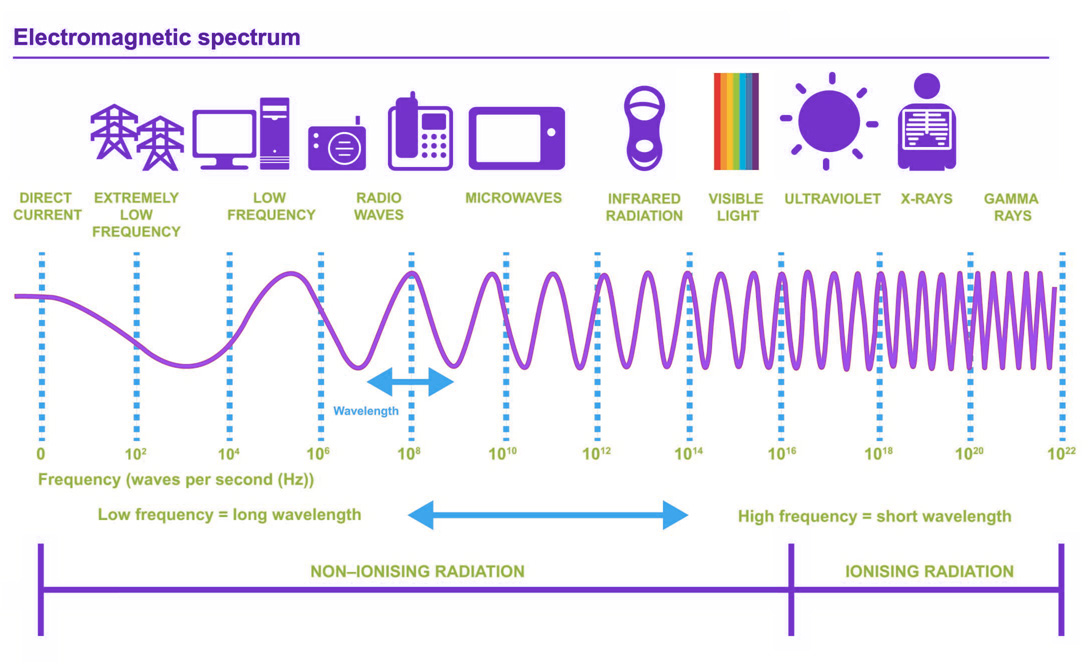 This PICON requirement was mentioned over 100 times in the 1934 Communications Act (it wasn't simply an empty promise). We use to police our spectrum more strongly than we do now. But the airwaves are still owned by the public and, as long as we keep it that way, the public will have power and sway with what happens to it (and to us through media.) Nevertheless, because we own the airwaves, it gives us great leverage when innovations or politics influence what the future of media will be and how the public will be served. So now you know how we ended up with the system/format we have in the U.S. and how important our power is as audience members. Other countries evolved differently. The UK, for example, has a paternalistic system (some is public, some is controlled by the government). And then there are authoritative systems where governments control all media (e.g., China, Russia, Turkey, North Korea). Keep returning to these ideas of audience empowerment as you learn other media literacy lessons throughout the rest of the course. Now let us address the concept of culture. CULTURE IS…A
set of attitudes, behaviors, and symbols shared by a large group of people and usually communicated from one generation to the next. POPULAR CULTURE Generally refers to trends in music, art, and other expressions that become popular among a group of people: slang, fashion, etc. NATIONAL CULTURE Common geographical origin, history, and language. Political entity recognized by other countries. Does passport necessarily determine your cultural values? National culture ignores the possibility of variety of cultures within that nationality Consider Native Americans: The original Americans. Yet they are not who typically pop to mind when visualizing contemporary Americans. Instead, Native Americans have been stereotyped and represented mostly as historical characters. Men have been stereotyped as savages, sidekicks, wise elders, doomed warriors, etc. Women have been steretotyped as squaws, princesses and matriarchs. Historically, media often cast white actors into lead Native American character parts (see this VILLAGE VOICE scrapbook for examples.) WATCH: the preview for Cree filmmaker Neil Diamond's fascinating and entertaining look at the history of the American Indian in cinema. READ HOW: INVISIBLE NO MORE: THE RISE OF NATIVE AMERICAN POWER IN MEDIA Things are changing but that does not change the atrocities (genocide, stealing of land, displacement to reservations, etc.) inflicted on Native Americans. Native American history IS American history. And what about American oligarchs? As Len Robertson wrote, "Looking around the world, mediocrity — or worse — seems to be the order of the political day. What is happening to democracy, one might wonder. Why do autocrats seemingly stand out from the crowd? Could it be that the smartest and brightest among us are off doing other things? Is it any accident that Bill Gates, Jeff Bezos, Larry Page, Sergey Brin, Eric Schmidt, Mark Zuckerberg and Elon Musk are tabbed to be trillionaires by 2040? When individual Americans are wealthier than Russia, what does that mean for American democracy? Much has been written about Russian oligarchs, their billions, and how they flaunt their worth and bully those around them. What about American trillionaires? What happens when they decide they can't trust American democracy to behave itself, to remain calm and predictable so they are free to pursue their various interests? A trillionaire today could buy TV networks, newspaper chains and the allegiance of politicos across the country with (for them) chump change. Seven trillionaires with conflicting egos and ambitions would make our political landscape today seem a model of serenity. No diversity in this crowd.
RACE CULTURE A group of people SUPPOSEDLY distinguished by certain similar and genetically transmitted physical characteristics (e.g., White, Black, Native American, Asian, Hispanic, Pacific Islanders, etc.) Culture is learned, racism and prejudice are learned,but race is also a social construction in a sense. Race is ultimately a false difference (because as humans, we are phycially more alike than different.) But the negative way that the construct of races gets used can be to separate, disenfranshise, discriminate, and to even kill with impunity or rationalization. As mentioned repeatedly, racism has played a large role in the United States' history (from before the start)—enslavement, suppression, subordination, marginalization, disenfranchisement. Watch this clip from NIGHTLINE about how Asians have been marginalized in America and by media objectification (stereotypes and perpetually being defined as immigrants.) Read about Jin "Gene" Luen Yang's “American Born Chinese,” a graphic novel that details what it’s like to grow up Asian in America. 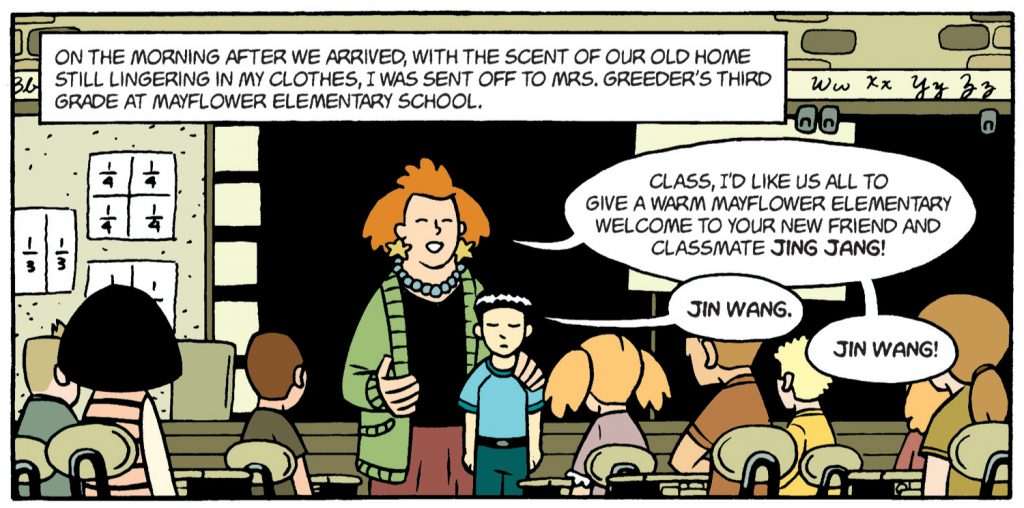 “When you read a well-done comic book, it’s like reading a page out of somebody’s diary,” Yang told his audience at the 2007 National Book Festival. “Nowadays, the most popular comics, the most well-received comics are things like ‘Maus’ and ‘Persepolis,’ where you really get this intimate interaction between the reader and the creator.” (“Maus,” by cartoonist Art Spiegelman, documents his father’s tales as a Holocaust survivor, and Marjane Satrapi’s graphic memoir “Persepolis” follows the author in her teen years in Tehran, Iran, during the Islamic Revolution.) Asians have been stereotyped by media. Men have been depicted as martial arts experts, servants, having exaggerated facial features. Women have often been regulated to either dragon ladies, sexual objects, erotica experts, or subservient geishas (a stereotype within a steretype as the artistic skill of geisha is muted by the subservient component of that stereotype.) One of my students also offered me this podcast by the FUNG BROS where they discuss problems facing Asians in everyday life.
In addition to all of the contemporary stories that are told by media, it is also important to recover histories as well. There are so many stories that make up American history (beyond the white-point-of-view "American History" mainstreamed in textbooks). History of marginalized cultures IS American history— all races and ethnicities that make up our melting pot of a country. Check out this interview with Angela Davis from the 1960s as she talks about how Blacks were represented/treated (notable that the interview was conducted by the foreign press):
And two wonderful speeches given by James Baldwin. I was expecially struck by the environments where he gave these speeches and the standing ovation reactions from the predominately white audience members that were present. This next 2 clips are also James Baldwin speaking a very popular talk show at the time (DICK CAVETT SHOW). Notice the similarities in the issues then and now, the questions, the concerns. The second clip was AFTER they returned from a commercial break. Watch it to the end. The systemic empirical evidence of racism he talks about aare still being discussed today. ETHNICITY CULTURE Ethnic Culture: A group of people distinguished by their belonging to a nation or tribe or group. Used in reference to groups characterized by a common nationality, geographic origin, but more importantly its values, traditions, behaviors, and language. Most often, self-identified. Ex: I am Korean American, African American, Mexican American, I am Latino, I am Asian, etc. Race: attitudes formed in consequence of being a minority or majority member (via privilege) based upon common biologic (genetic or phenotypic) traits or physical traits (skin color, hair texture, cranial profile/size, etc.) Ethnicity: attitudes formed associating with the traditions, values, language, religion, some physical traits of a particular ethnic group. Consider the Latino culture. Males often stereotyped as sidekicks, gay sidekicks, cops, Latin lovers. Females often stereotyped as Catholics with lots of children, homemakers, cooks, and maids. WATCH GABE'S FIVE LATINO STEREOTYPES for a quick run down. WATCH THE TAKE'S "take" on the spicy Latina trope and it negatively affects Latinas GENDER CULTURE Male/Female vs. Masculine/Feminine: In the past, the thinking was people are born male/female but what it is to be masculine/feminine is a cultural construction. The debate about gender revolves around NATURE VS. CULTURE, labeling, self definition, expression and presentation. That thinking is changing. Because, in fact, all of the labels of biology (male, female), gender (masculine, feminine), orientation (heterosexual, homosexual, bisexual, transgender, intersexual, asexual, etc.) are human-meaning constructions. And, if you notice, most traditional labels are binary (opposites or positioned as two ends of a spectrum). When humans create systems and structures, there are always inherent hiearchies and power structures. When your biological sex matches your gender identity and expression, resulting in other people accurately perceiving your gender, it is called "cisgender" which remains the mainstream, dominant cultural position. READ this in order to see some ways, cisgendered people enjoy a lot of cultural privilege. The Heterosexual male perspective still remains the dominant cultural gender perspective in the U.S. and most of the world (also in media content, representation and point-of-view). Here is an image that breaks down the gender evolution into some simpler/visual terms. This would be a great place to start if you wanted to get educated about gender expression. WATCH SLATE'S take on Gay Representation on Television WATCH INSIDER NEWS's report on "How Queer Characters Have Evolved In Children's Animation" MEDIA CULTURE Represents culture: distorted and true. Creates new culture. Is a culture of its own. Media are institutions (companies), technology, cultural forums, go-betweens, mediators. How do media producers affect culture? They do it by remaining invisible (we think of media as simply a tool or a service or a destination for information and entertainment. We rarely take a critical look at how they influence our lives, create the concept of "normal", convince us to to act/buy products, convince us to engage in activities that are actually NOT good for us. Media effects are planned, researched and implemented mostly without our knowledge. Watch a short clip from THEY LIVE but read the following set up first: The story revolves around an unemployed, manual laborer, construction worker guy who stumbles upon an underground revolution against aliens that have come to Earth to steal our resources and use humans as slaves. They have hypnotized us with technology to "stay asleep" and not realize what is happening to us…what we are doing to ourselves. The only way to "wake up and see what is really going on" is with these special sunglasses. This following clip from THEY LIVE shows the moment the laborer-worker first puts on the glasses. He sees "the truth" in black and white, and "the illusion" in color when he takes off the glasses.
The question is one of how we perceive and/or define ourselves: ARE WE MERELY CONSUMERS? OR ARE WE ACTIVE CITIZENS OF OUR CULTURE, OUR DEMOCRACY, and OUR WORLD? CONSUMER CULTURE Are you and audience member or a consumer? The juxtaposition infers that audience members actively participate with and are served by the relationship with media while consumers are simply the component necessary to complete a sales transaction. We have become a culture of CONSUMERS (instead of being engaged audience members, we behave as (and are treated by corporations as) consumers. All sociological students regarding consumption come to the same general conclusion: having more stuff does NOT make us happier. In fact, it makes us UNhappier. Watch THE STORY OF STUFF (20 minutes). Watch the entire program paying especially close attention to the "golden arrow" section. The story of the negative effects of media isn't new. And, keep in mind, media effects can also be positive and/or artistic. Based in the UK, two musicians set out to create a multimedia project that would encompass a CD, DVD and cinematic presentation that would offer a complete artistic statement. The project offers music, digital video footage shot over the course of six months by Catto and Bridgeman, images, rhythms and spoken word content. 1 GIANT LEAP. WATCH 1 Giant Leap Film: Money - Racing Away
WATCH Documentary SAMSARA'S OVER CONSUMPTION SEGMENT: Keep in mind that engaging with or being a member of a culture is a matter of choice. Culture is LEARNED, it is NOT INNATE. You are not born being Latino, or feminine or religious...all of those things (what it means to be those things ) are LEARNED. And anything that can be learned, can changes. In the end, it is our thoughts about things that are more important than the things themselves. Meaning lies within human beings not within the objects we are observing. The more aware you are regarding your cultural participation, the more you can make the most of your time in terms of doing what is good for you and others. Marketers are very interested in how much time (quantity) and what kind of interactions (quality) we have with media. They typically combine several variables to define a demographic profile. A demographic profile (often shortened to "a demographic or demo") provides enough information about the typical member of an audience to create a mental picture of a hypothetical aggregate (the entire U.S. audience is made up of smaller sub-segments). For example, a marketer might speak of the single, female, middle-class, age 18 to 24, college educated demographic. Market researchers typically have two objectives when determining audience characteristics: first to determine what segments or subgroups exist in the overall population; and secondly to create a clear and complete picture of the characteristics of a typical member of each of segments. Once these profiles are constructed, they can be used to develop a marketing strategy and marketing plan—to effectively "reach" target audiences with information about their products and/or services. The five types of demographics for marketing are age, gender, income level, race and ethnicity. For example, for age, the U.S. population is typically lumped into these generational categories: [Ref—http://www.entrepreneur.com/article/202334#]: GEN I or GEN Z Called Gen Z, the internet generation or iGeneration, they're the children of the youngest boomers. Because this generation is still very young, marketing and demographics theories are still developing. One huge distinction, however, can be made: This generation is the only one to be born entirely in the internet era, and to parents who are generally more accepting and knowledgeable of such technology. This differs from the next generation, Gen Y, which sometimes dealt with tensions stemming from their parents' lack of technological savvy or acceptance. GEN Y Also referred to as millenials or "echo boomers," they are the children of boomers, ages nine to 27. Because of higher costs of living or, in some cases, the over-protective nature of their boomer parents, many are choosing to live at home. University of Michigan economics and public policy professor Bob Schoeni told Time magazine that the percentage of 26-year-olds living with their parents rose from 11 percent to 20 percent between 1970 and 2004. They're 75 million strong and they have disposable income because of their parents' support. Growing up with computers means this generation is especially responsive to internet campaigns. They process information quickly and are especially brand loyal. Gen Yers like innovative marketing approaches and advertising that uses humor or is "outside the box." WATCH Simon Sinek's MILLENIAL QUESTION. GEN X They are perhaps the most overlooked generation, falling in the shadow of the powerful baby-boom generation. But the 44 million Gen Xers born between 1965 and 1975 are entering their peak earning and buying years. They're tech-savvy and love to shop. They have a high value for education and knowledge. Unlike Gen Yers, brand prestige alone won't woo this generation--let them know why your product is a good value. They are independent and like to save. BOOMERS Until the boomer generation hit age 50, marketers generally forgot consumers once they passed that age mark. Today, however, they're awakening to the buying power of this 76 million-strong group. On average boomers spend $400 billion more per year than any other generation. They're at many life stages: empty nesters or full nesters, boomer grandparents, single or married, etc. What they have in common is exceptional drive and the ability to evaluate advertising and determine its value to them. Between 2005 and 2030, the over-60 group will grow by 80 percent--as they age, be careful not to label them as "old." This generation has a Peter Pan complex--play up their youthfulness in marketing. The Greatest Generation Born between 1909 and 1945, today's octogenarian has seen it all when it comes to advertising, resulting in a particularly savvy consumer segment. They are more careful about whom they do business with, and they want to know more about your business before they choose to patronize it. Having been born during, or lived through, the Great Depression, World War II and many economic recessions, they're keen on value and in general don't "shop for fun" as other generations tend to do. They have pensions to rely on that other generations won't have as they become senior citizens, so concentrate on communicating the value of your product or services. A practical bunch, they also tend to be extremely loyal customers. But marketers don't stop there. They are also interested in our psychographics. Psychographics is the study of personality, values, opinions, attitudes, interests, and lifestyles. Because this area of research focuses on interests, attitudes, and opinions, psychographic factors are also called IAO variables. Psychographic studies of individuals or communities can be valuable in the fields of marketing, demographics, opinion research, futuring, and social research in general. Psychographics should not be confused with demographics, for example, historical generations (listed above) may be defined both by demographics, such as the years in which a particular generation is born or even the fertility rates of that generation's parents, but also by psychographic variables like attitudes, personality formation, and cultural touchstones. For example, the traditional approaches to defining the Baby Boom Generation or Generation X or Millennials have relied on both demographic variables (classifying individuals based on birth years) and psychographic variables (such as beliefs, attitudes, values and behaviors). MEDIA ECONOMICS: Show me the money. Follow the money. There are two important things you need to learn regarding media economics. 1. When people think about the purpose of media, they may list things like: to inform, to entertain, to help make our lives more convenient, etc. Media researchers have defined four major functions of media: 1. To inform
Not much is left to chance, every image is planned down to the finest detail. Media use all information at their disposal. They pay for studies to determine media effects (and how people think/feel so the effects can be...more effective. 2. The role of the audience in the economic infrastructure. Consider the typical buyer-seller-product relationship.
So you were going to eat some mac-n-cheese for dinner it would work like this: KRAFT ----------> Mac 'n Cheese --------> you (public When you ask most people, how media make their money (and specifically television), they know enough to answer "the ratings" but they do not fully understand what that means. They assume broadcasters are selling time to avertisers. So they incorrectly map the model like this: MEDIA ----------> Commercial Air Time--------> Advertisers Not correct. If this was true, then :30 seconds of a soap opera would cost the same as :30 of the Super Bowl. It isn't TIME that is being bought and sold, it is the audience. The more eyeballs and ears, the more money advertisers will be willing to pay.
A broadcaster sells YOU to advertisers. YOU ARE THE PRODUCT. That is what the rating system is all about: Measuring how many people (and what kind of people) are consuming what content at what time. TV BY THE NUMBERS is a good site to see how different shows are doing in the ratings. Despite this seemingly depressing situation, I urge people to believe that things are NOT they way they are by accident or inertia. Things change. ANYTHING can change. The media money "deal" (where we are the product) cannot be completed without us (the audience) so we have to be willing to NOT SHOW UP until the situation is is good for us (better quality programming content, reasonable access, affordable prices, etc.) When the people stand up, the media MUST adjust because they cannot afford to lose us or our interest. Media use advertising to sell us products, lifestyles, ideas, politicians, etc. They do this the HARD SELL (giving us facts and figures to consider) and the SOFT SELL (appealing to our emotions). WATCH THE FOLLOWING COMMERCIALS and think about what is being sold BESIDES the specific product. Notice who is the "star" or what is the focus of the ad. How are people dressed? What are the people doing in the ad? What is the product/idea/lifestyle/perception being sold? CARL's Jr.: Is this burger company selling healthier food? All natural ingredients? Innuendo is everywhere: from the angle of the food to the woman's over-the-top reaction. It is a parody, to be sure. But these same tactics are used all the time...and NOT as a parody. The joke is on us. Is this a jean's ad? Or a Justin Bieber and Lara Stone ad? Or both? Or neither? CALVIN KLEIN AD
Watch this classic tire commercial, how far have we come in portraying sexist themes? There is a contemporary version of this (a car with a woman driving her kids, in the rain, runs over a piece of wood, etc.) If you find this commercial, let me know. GOODYEAR 1960s TIRE COMMERCIAL Then, Interestingly (and thank goodness) the same hard and soft sell can be used to "sell" prosocial ideas (not just consumer products). CHEERIOS AD (First bi-racial ad ever played during a SuperBowl) drew a huge backlash for being biracial:
Dove's REAL Beauty Ad addresses the unrealistic beauty industry and hows how fake advertising images can be. DOVE'S ONSLAUGHT ONSLAUGHT: Illustrates the bombarkment of advertising.
DOVE'S BODY EVOLUTION: Illustrates how devastating the beauty myth can be on girls.
ANTI-DOMESTIC VIOLENCE CAMPAIGNS: The reason why domestic violence PSAs such as these (that have been shown in Canada) is because U.S. media think they are "too violent". HOMEFRONT: OFFICE
HOMEFRONT: RESTAURANT
DOMESTIC VIOLENCE ON MOVIE SET WITH KIERA KNIGHTLY
Finally, ADBUSTERS has a bunch of AMAZING UN-COMMERCIALS you can enjoy. Ads that they cannot get U.S. networks to air because "they are too controversial." ADBUSTERS: UNCOMMERCIAL "THE GDP GOES UP"
ADBUSTERS: UNCOMMERCIAL "CONSUMER PIG"
Here is an ADBUSTERS ad illustrating "THE PRODUCT IS YOU" concept:
MEDIA EFFECTS AND CULTURAL APPROACHES TO RESEARCH
We have been studying how media effects work since the beginning of media. Media is not real, it represents reality. Watch MEDIA REPRESENTATION| Media in Minutes | Episode 7 Be familiar with the following theories regarding how media affects us as individuals or as large groups. HYPODERMIC (OR MAGIC BULLET) THEORY (HAROLD LASWELL) This theory assumes a linear, direct, point-to-point effects. It was one of the earliest theories based upon direct effects observed by the WAR OF THE WORLDS radio broadcast and Hitler's propaganda campaigns.
TWO-STEP FLOW THEORY (Paul Lasersfeld) This theory states that opinion leaders pay attention to media content and then pass on the information to audiences. So it is a step away from direct effects and assumes audiences are active. Watch Two-Step Flow | Media in Minutes | Episode 2 USES AND GRATIFICATIONS Uses and Gratifications theorists explain why people choose and use certain media forms. The theory emphasizes a limited effect position; that is, the media have a limited effect on their audiences because audiences are able to exercise control over their media. The influence of media is limited to what people want it to be. Uses and Gratifications Theory attempts to answer the following: What do people do with the media? Now you have a strong idea about how media effects have been studied and what theories we have about how it all works. One of the major goals of this course is to make everyone more educated and thoughtful consumers and producers of media. The only way media will improve is if we set the bar higher. The only way the media will change, is if we demand it. Watch this explanation of Hyperdermic Needle, Two-Step Flow and Uses and Grats SOCIAL COGNITIVE THEORY (SOCIAL LEARNING THEORY) People imitate what they see in media. People learn by imitation and identification. SELECTIVE PROCESSES People selective expose themselves or pay attention to mostly those messages consistent with their pre-existing beliefs or attitudes. Selective exposure, selective perception, selective retention. 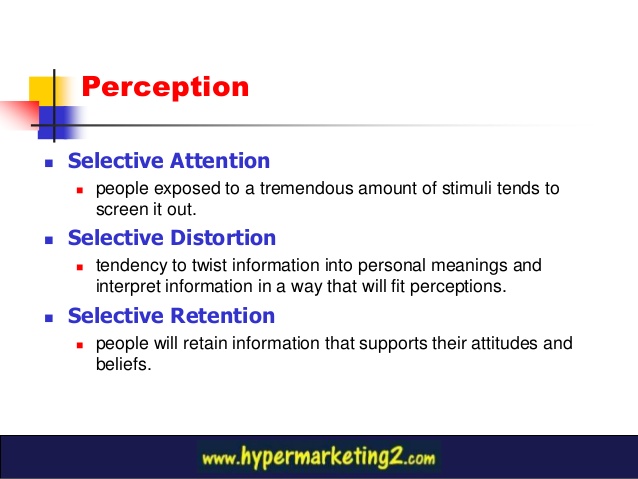 AGENDA-SETTING THEORY (Maxwell McCombs and Donald Shaw) The media tell us NOT WHAT TO THINK, but (1) WHAT to think about, and (2) HOW to think about it. The first process (agenda setting) transfers the salience of items on their news agenda to our agenda. The second process (framing) transfers the salience of selected attributes to prominence among the pictures in our heads. (Socio-psychological tradition) Watch The Agenda Setting Function Theory | Media in Minutes | Episode 3 REINFORCEMENT THEORY (Joseph Klapper) This theory turned thought away from the direct-effects model of communication effects and said that media don't directly affect people, but instead, simply reinforces what people already think. Watch REINFORCEMENT THEORY | MEDIA IN MINUTES | EPISODE 4 CULTURAL STUDIES (Stuart Hall) The mass media function to maintain the ideology of those who already have power. Corporately controlled media provide the dominant discourse of the day that frames interpretation of events. Critics should seek not only to interpret culture, but to change it. Media audiences do have the capacity to resist hegemonic influence. (Critical tradition)
COGNITIVE DISSONANCE (Leon Festinger) Cognitive dissonance is an aversive drive that causes people to (1) avoid opposing viewpoints, (2) seek reassurance after making a tough decision, and (3)change private beliefs to match public behavior when there is minimal justification for an action. Self-consistency, a sense of personal responsibility, or self-affirmation can explain dissonance reduction. (Socio-psychological tradition) Simply put: you feel uncomfortable and you do the thing (or consume the media messages) that make you feel better (by agreeing with you, praising you, etc.) CULTIVATION THEORY (George Gerbner) Television has become society's storyteller. Heavy television viewers see a vast quantity of dramatic violence, which cultivates an exaggerated belief in a mean and scary world. Mainstreaming and resonance are two of the processes that create a homogeneous and fearful populace. (Socio-cultural and socio-psychological traditions)Television has become society's storyteller. Heavy television viewers see a vast quantity of dramatic violence, which cultivates an exaggerated belief in a mean and scary world. Mainstreaming and resonance are two of the processes that create a homogeneous and fearful populace. (Socio-cultural and socio-psychological traditions). DEPENDENCY THEORY (Sandra Ball-Rokeach and Melvin DeFleur) It proposes an integral relationship among audiences, media and the larger social system. This theory predicts that you depend on media information to meet certain needs and achieve certain goals, like uses-and-gratifications theory. But you do not depend on all media equally. Two factors influence the degree of media dependence. First, you will become more dependent on media that meet a number of your needs than on media that provide just a few. The second source of dependency is social stability. When social change and conflict are high, established institutions, beliefs, and practices are challenged, forcing you to reevaluate and make new choices. At such times your reliance on the media for information will increase. At other, more stable times your dependency on media may go way down. One’s needs are not always strictly personal but may be shaped by the culture or by various social conditions. In other words, individuals’ needs, motives, and uses of media are contingent on outside factors that may not be in the individuals’ control. These outside factors act as constraints on what and how media can be used and on the availability of other non-media alternatives. Furthermore, the more alternatives and individual had for gratifying needs, the less dependent he or she will become on any single medium. The number of functional alternatives, however, is not just a matter of individual choice or even of psychological traits but is limited also by factors such as availability of certain media. CONCEPTUAL MODEL — DEPENDENCY THEORY This model is the general idea of the dependency theory. 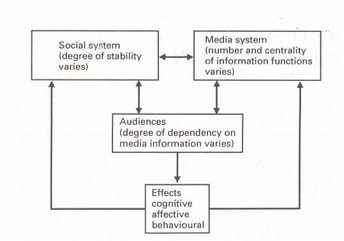 Source: Ball-Rokeach & DeFleur (1976) HIERARCHY OF NEEDS (Abraham Maslow) According to Maslow, there are four kinds of needs that must be satisfied before a person can act unselfishly: Physiological, Safety, Love, Esteem, Self Actualization (article here—optional if you'd like to know more.) MEDIA ECOLOGY (Marshall McLuhan) The media must be understood. Changes in communication technology alter the symbolic environment—the socially constructed, sensory world of meanings. We shaped our tools—the phonetic alphabet, printing press, and telegraph—and they in turn have shaped our perceptions, experiences, attitudes, and behavior. Thus the medium is the message. (Socio-cultural tradition) One of my favorite quotes from McLuhan: All media work us over completely. They are so persuasive in their personal, political, economic, aesthetic, psychological, moral, ethical, and social consequences that they leave no part of us untouched, unaffected, unaltered. The medium is the message. Any understanding of social and cultural change is impossible without a knowledge of the way media work as environments. All media are extensions of some human faculty- psychic or physical. -Marshall McLuhan The Medium is the Message SEMIOTICS (Roland Barthes) The significant visual sign systems of a culture affirm the status quo by suggesting that the world as it is today is natural, inevitable, and eternal. Mythmakers do this by co-opting neutral denotative signs to become signifiers without historical grounding in second-order connotative semiotic systems. (Semiotic tradition). Semiotics is associated with Symbolic Interaction Theory This theory suggests that people are motivated to act based on the meanings they assign to people, things, and events. Further, meaning is created in the language that people use both with others and in private thought. Language allows people to develop a sense of self and to interact with others in community. SOCIAL CONSTRUCTION OF REALITY (Peter L. Berger and Thomas Luckmann) The theory that examines the development of jointly constructed understandings of the world. It assumes that understanding, significance, and meaning are developed not separately within the individual, but in coordination with other human beings. The elements most important to the theory are (a) the assumption that human beings rationalize their experience by creating a model of the social world, how it functions and, (b) that language is the most essential system through which humans construct reality. A major focus of social constructionism is to uncover the ways in which individuals and groups participate in the construction of their perceived social reality. It involves looking at the ways social phenomena are created, institutionalized, known, and made into tradition by humans. The social construction of reality is an ongoing, dynamic process that is (and must be) reproduced by people acting on their interpretations and their knowledge of it. Because social constructs as facets of reality and objects of knowledge are not "given" by nature, they must be constantly maintained and re-affirmed in order to persist. This process also introduces the possibility of change: what "justice" is and what it means shifts from one generation to the next. SPIRAL OF SILENCE Theorists associated with Spiral of Silence Theory argue that due to their enormous power, the mass media have a lasting effect on public opinion. The theory maintains that mass media work simultaneously with Majority public opinion to silence minority beliefs on cultural issues. A fear of isolation prompts those with minority views to examine the beliefs of others. Individuals who fear being socially isolated are prone to conform to what they perceive to be a majority view. The phrase "spiral of silence" actually refers to how people tend to remain silent when they feel that their views are in the minority. The model is based on three premises: 1) people have a "quasi-statistical organ," a sixth-sense if you will, which allows them to know the prevailing public opinion, even without access to polls, 2) people have a fear of isolation and know what behaviors will increase their likelihood of being socially isolated, and 3) people are reticent to express their minority views, primarily out of fear of being isolated. The closer a person believes the opinion held is similar to the prevailing public opinion, the more they are willing to openly disclose that opinion in public. Then, if public sentiment changes, the person will recognize that the opinion is less in favor and will be less willing to express that opinion publicly. As the perceived distance between public opinion and a person's personal opinion grows, the more unlikely the person is to express their opinion. SOCIAL RESPONSIBILITY (Philosophy) If the media wants to remain free from government control, it must serve the public. SOUND RECORDING AND POPULAR MUSIC
Watch the early radio show, AMOS AND ANDY. Note that the men who are playing African American characters are white men. And, when they visually recorded it, they played the characters in blackface (#racist). Pay attention to the affectation in their speech, their education level, etc.
WATCH BEYONCE's HOLD-UP and watch it critically. How is she dressed? How does she move? What are her lyrics expressing? How is she moving through the cultural space around her? What does a video like this suggest we believe? It can be argued that contemporary feminism is being led by women of color—particularly African-American women. It is fiercely debated whether representations created by artists like Beyonce and Rhianna are "helping" feminism (because the women are comfortable in their own skin and body types, in charge in the narratives of their performances and in the music industry) or "hurting" feminism (because their performances are sexualized and they participate in beauty-mythical, misogynistic practices). WATCH Sexism Challenge Part 3 - Feminism, Womanism, and Intersectionality to better understand distinctions and strategies for dismantling sexism: WATCH a clip from Jill Kilbourne's KILLING US SOFTLY. There have been four of these made. But I'm choosing for you to watch the first one from 1979. Because I want you to see that we've been talking about this for generations and how we've been talking about it. Pay attention to how advertising creates "normalcy" for women to strive for in terms of beauty and physical representation. At the same time, sexism is working against men as well. Men ar expected to be tough, strong, money makers (providers to the family). They are not allowed the full spectrum of emotions and are socially punished if they don't comply with mainstream norms. WATCH a segment from TOUGH GUISE by Jon Katz: Watch the following two films—in the entirety. You can watch for free through SJSU's Kanopy, just log in like you usually do). Here are the links: TELEVISION AND CABLE: THE POWER OF VISUAL CULTURE Watch Mr. Fred Roger's testimony to Congress (to an angry panelest). Mr. Rogers turns the situation around with his compassion, his feelings and his kindness.
Watch this episode of Mr. Roger's on LOVE. It is my favorite episode. It may make you laugh or even feel uncomfortable watching two grown men soaking their feet in a wading pool (why should such a scene make anyone uncomfortable?) This was a groundbreaking episode because of the integration factor. Amazing. In the 20th century, the influences of historical representations of racialized groups within the United States have been demonstrated throughout media. As a media literate person, you should carefully consider narratives and representations (make the invisible visible) of gender, race and class that are being perpetuated by media in our culture. Think about it? Who are said to be the best athletes? The best lovers? Best at math? Bad at math? Best at raising children? Best at cleaning? Best at cooking? Worst drivers? Best at making decisions? Selfish with money? Self centered? Greedy? Able to drink a lot of alcohol? Watch SOULS OF BLACK GIRLS (40 minutes) for an expose of how black women are portrayed and the pressure that is on them to adopt a specific (European/white) beauty standard. Recently, NIVEA was busted for promoting a "skin lightening" aspect of one of their products to women in Africa:
NOT REQUIRED WATCH: But if you are interested in other films like the one above, SJSU.KANOPY.COM has a bunch of gender/race and media videos available. Just search for MEDIA and you will see videos and documentaries on media portrayals of- and effects on Asians, Latinxs, Native Americans, Arabs, African-Americans/Blacks, Genders, Sexual Orientations, etc. Social implications: Viewers are mostly exposed to one-dimensional portrayals of race and gender. Representation of people of color as athletes and criminals far outweigh "mainstream" or "normalized" character representations (as professionals, as rich, as powerful, etc.) ¨The audience begins to believe that these caricatures are accurate depictions of life and people. Actors of color often still type-cast (even at this day and age), excluding them from roles that would demonstrate a range of emotions and characteristics. Such images perpetuate racist stereotypes. Non-majority viewers are confronted with the reality that their “place” in popular media—especially television— is largely fixed in steretypes. But what do these representations have to do with the reality that realistic experiences are nearly absent from media narratives? Certainly the situation has improved from 100 years ago. Or has it? And, if it has, not by very much. Why isn't racism receiving non-stop attacks by media until people work together to eradicate it? Why isn't it a top priority to end the epidemic war on and over zealous incarceration of African-Americans, for example? How can media portrayals help/change the fact that parents of young people of color, have to teach and remind them how to behave if they are stopped by authorities? Or that their rights will most likely be violated at some point in their lives (despite their doing nothing wrong) and that, in many cases, the justice system will fail them? The contemporary consequences of perpetuated stereotypes include: Disenfranchisement of the communities of color from social and economic opportunities and services because prejudgements are made about them in terms of their value, work ethic, needs, desires, culture, etc. WATCH these clips on COPAGANDA (a portmanteau of cop and propaganda,it is a phenomenon described by critics of law enforcement in which news media and other social institutions promote celebratory portrayals of police officers with the intent of swaying public opinion for the benefit of police departments and law enforcement).
WATCH Bryan Stevenson's TED TALK on identity and mass incarceration of mostly African American young men. Stevenson’s talk reportedly received the longest standing ovation in TED history.
Of course, race revolves around the majority and its privilege. Here is an interesting discussion of White privilege written by a white woman who is grappling with understanding privilege while living and being inside it: WATCH Tim Wise's clip on WHITE DENIAL
WATCH ONE GIANT LEAP'S MY CULTURE to see how other cultures talk about representation and racism and use music as a way to deliver their messages.
NEWSPAPERS: THE RISE AND DECLINE OF MODERN JOURNALISM WATCH Dan Rather's statement on JUNK MEDIA
WATCH Bill Moyer's excerpt from PUBLIC MIND: ILLUSIONS OF NEWS: MEDIA ECONOMICS AND THE GLOBAL MARKETPLACE WATCH the excerpt from HOW TELEVISION FRAMES WORKING CLASS
WATCH the trailer for NICKLED AND DIMED where a journalist does a year-long experiment to try and get buy on minimum wage (surprise surprise, she can't do it).
WATCH CBS's AXIS OF FOOD EVIL: FAT, SUGAR, and SALT WATCH first 10-15 minutes of FOOD INC. So, given what you've learned over the course of the semester (to name a few major points): Media have influence. The medium (of media) matters (radio, television, film, social media, virtual reality, etc.) There are various ways in which media effect individuals and society Gender, Race and Class are all created, maintained, changed, destroyed, etc. by the public mind. There are specific and complex systems that are premeditatedly creating and perpetuating dominate ideas by which "others" position and judge themselves. Sterotypes adversely affect groups and perpetuate non-mainstream subordination. So is there any hope given the gravity of the situation? READ: HOW SOCIAL MEDIA ALGORITHMS WORK TODAY In this article, it states that, "Facebook’s latest algorithm update, which they announced in January 2018, now puts posts “that spark conversations and meaningful interactions between people” at the top of your News Feed. This means the content that receives the most engagement—reactions, comments, and shares—will be the highest." But think about it: Which of your posts tend to engage the most people or receive the most interaction? Death? Marriage? Politics? I would argue that a political post tends to cause a back-and-forth (resulting in feuds or "unfriendings" or "blockings".) So, while it sounds like Facebook is engaging generically to find the most engaging content, in reality divisiveness and division and arguments get the most clicks. READ: FACEBOOK OVERHAULS NEWS FEED There are groups that are recognizing that the thing that got us into this mess could be the very thing that gets us out. And, due to the recent backlash of Facebook, changes have been made that "seemed designed to quiet some of the maelstrom of criticism Facebook has received in the past year, as critics have taken the company to task for cloistering users in filter bubbles, facilitating the proliferation of misinformation, allowing foreign interference in national elections, and exploiting human psychology for profit." A step in the right direction. It all comes down to information. People need to know that they are being "led" down a path of compliance and purchasing and opposition to others. They need to be informed that they have power and agency in the media/audience relationship. People need to know that they are MORE than merely consumers and public-minded sheep following the directions (or thinly-veiled orders) of those in charge of money, politics and power. That is what RTVF 110 is trying to accomplish. To take a short amount of time to allow you to step back, look at and think about what is happening. By making you more media literate, you should expect/demand more from media (and yourselves within the audience-media interaction and relationship.)
|


